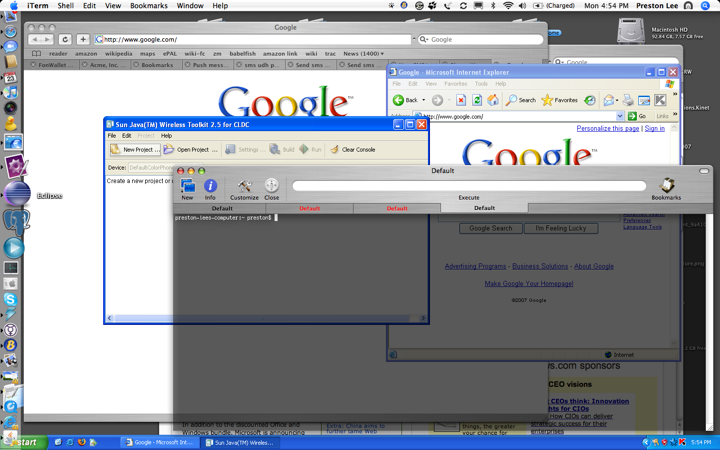This is an abbreviated and simplified version of a more official document. Run these either as root or with the “sudo” command..
- apt-get install ubuntu-xen-desktop-amd64 to install a new Xen kernel and various other tools. Apparently we’re supposed to use the “server” version instead, but it didn’t show up in the repository. Oh well.
- apt-get install debootstrap to install the “debootstrap” system bootstraping tool for you.
- reboot into the new kernel.
- xm list to make sure Domain-0 shows up. Domain-0 represents the host system.
- Edit /etc/xen/xend-config.sxp and uncomment “(network-script network-bridge)”. Also comment out “(network-script network-dummy)”.
- xend restart to restart the xen daemon.
- mkdir -p /xen/slave1 to create a mountpoint for the slave system disk.
- dd if=/dev/zero of=/xen/slave1.ext3 bs=1M count=512 to create a 512MB “disk” as a normal file.
- mkfs.ext3 /xen/slave1.ext3 to create a file system in said empty file.
- mount -o loop -t ext3 /xen/slave1.ext3 /xen/slave1 to manually mount the new filesystem to its mount point.
- debootstrap –arch amd64 edgy /xen/slave1 to install a bare bones edgy system onto the new file system.
- cp -a /lib/modules/2.6.19-4-generic-amd64/ /xen/slave1/lib/modules/ to install the hosts kernel modules into the new system.
- Edit /xen/slave1/etc/network/interfaces. It should look similar to..auto lo
iface lo inet loopbackauto eth0
iface eth0 inet static
gateway 192.168.1.110
address 192.168.1.111
netmask 255.255.255.0..where “gateway” is the host machines IP address, and “address” is a unique IP address for the slave machine.
- Update /xen/slave1/etc/hostname with whatever you want its host name to be.
- Update /xen/slave1/etc/hosts with all your IP addresses.
- Update /xen/slave1/etc/fstab to mount stuff on boot, like so..proc /proc proc defaults 0 0
/dev/hda1 / ext3 defaults,errors=remount-ro 0 1 - umount /xen/slave1 to unmount the file system.
- Create /etc/xen/edgy-guest.cfg to configure the host to start the guest, like so..
kernel = “/boot/vmlinuz-2.6.19-4-generic-amd64”
ramdisk = “/boot/initrd.img-2.6.19-4-generic-amd64”
builder=’linux’
memory = 512
name = “edgy-slave1”
vcpus = 1
vif = [ ‘bridge=xenbr0’ ]
disk = [ ‘file:/xen/slave1.ext3,ioemu:hda1,w’ ]
root = “/dev/hda1 ro” - xm create slave1-edgy.cfg to create and start the new domain.
- xm console slave1-edgy to establish a console to the new domain. (Hit CTRL+] to exit.)
You should now be able to log in via the xm console as root, and ping the guest on 192.168.1.111 (or whatever its IP address is). w00t!


 Only developers with hair should use
Only developers with hair should use